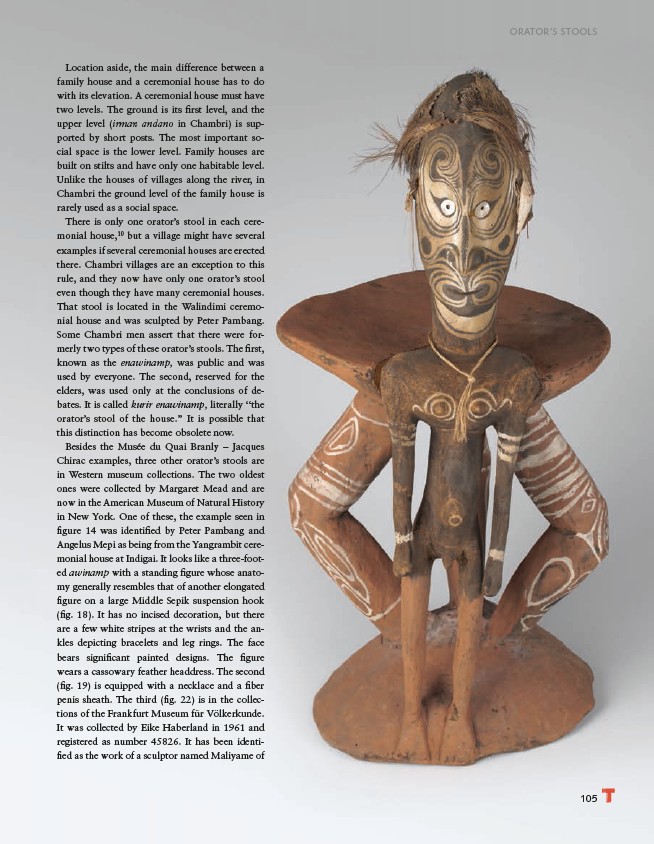
105
Location aside, the main difference between a
family house and a ceremonial house has to do
with its elevation. A ceremonial house must have
two levels. The ground is its first level, and the
upper level (irman andano in Chambri) is supported
by short posts. The most important social
space is the lower level. Family houses are
built on stilts and have only one habitable level.
Unlike the houses of villages along the river, in
Chambri the ground level of the family house is
rarely used as a social space.
There is only one orator’s stool in each ceremonial
house,10 but a village might have several
examples if several ceremonial houses are erected
there. Chambri villages are an exception to this
rule, and they now have only one orator’s stool
even though they have many ceremonial houses.
That stool is located in the Walindimi ceremonial
house and was sculpted by Peter Pambang.
Some Chambri men assert that there were formerly
two types of these orator’s stools. The first,
known as the enawinamp, was public and was
used by everyone. The second, reserved for the
elders, was used only at the conclusions of debates.
It is called kurir enawinamp, literally “the
orator’s stool of the house.” It is possible that
this distinction has become obsolete now.
Besides the Musée du Quai Branly – Jacques
Chirac examples, three other orator’s stools are
in Western museum collections. The two oldest
ones were collected by Margaret Mead and are
now in the American Museum of Natural History
in New York. One of these, the example seen in
figure 14 was identified by Peter Pambang and
Angelus Mepi as being from the Yangrambit ceremonial
house at Indigai. It looks like a three-footed
awinamp with a standing figure whose anatomy
generally resembles that of another elongated
figure on a large Middle Sepik suspension hook
(fig. 18). It has no incised decoration, but there
are a few white stripes at the wrists and the ankles
depicting bracelets and leg rings. The face
bears significant painted designs. The figure
wears a cassowary feather headdress. The second
(fig. 19) is equipped with a necklace and a fiber
penis sheath. The third (fig. 22) is in the collections
of the Frankfurt Museum für Völkerkunde.
It was collected by Eike Haberland in 1961 and
registered as number 45826. It has been identified
as the work of a sculptor named Maliyame of
ORATOR’S STOOLS